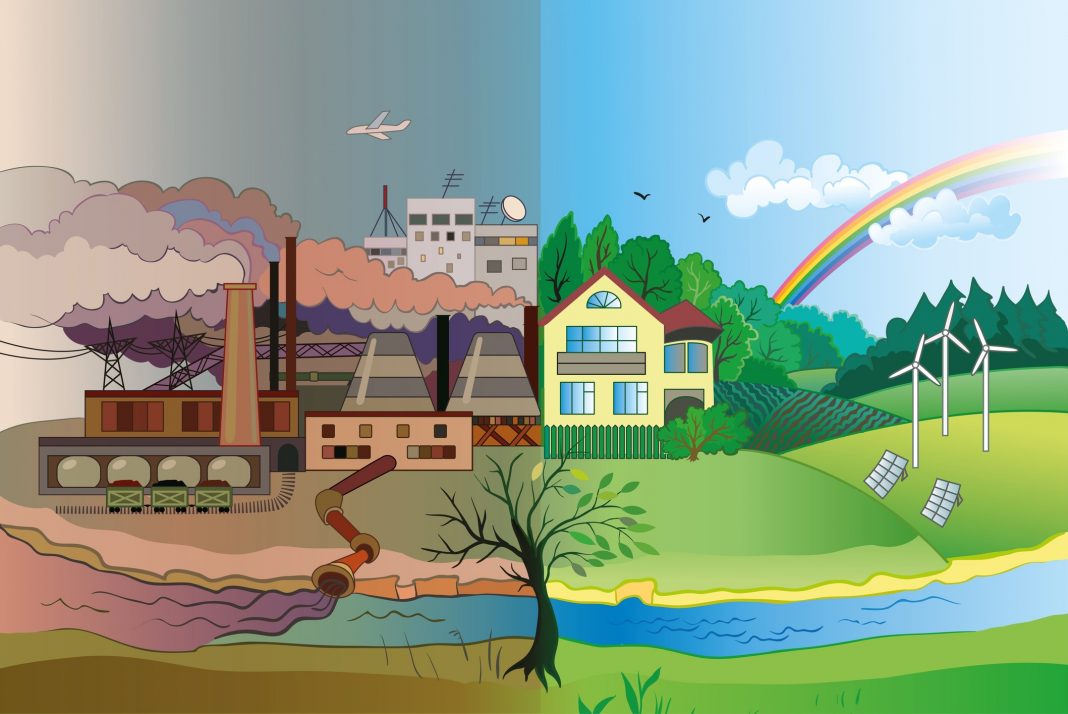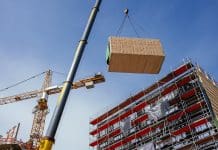BM TRADA explains why over the last two decades, environmental sustainability has been a core concern for the construction industry.
Within the last two decades, environmental sustainability has become one of the core concerns for the construction industry, and all those involved in the complex process of planning, designing, constructing, maintaining and operating buildings.
The drivers for this can roughly be divided into 3 main categories: ethical, relational, and competitive.
The ethical driver relates to an awareness and acknowledgement of the built environment’s negative impact on pollution levels and use of resources, and a shared responsibility to minimise those vectors; the relational motivator refers to the desire among firms to improve their brand relationship with different stakeholder groups, including regulators, clients and the public; and the competitive driver concerns the many commercial advantages that can be gained through the implementation of a sound environmental management system (EMS).
Taking the ethical driver first, there is an ever-increasing awareness within the industry of the significant impact that the construction of buildings and infrastructure has upon the environment – both through the creation of pollutants and waste, and consumption of resources.
According to a report by the construction company Willmott Dixon Group, the industry accounts for as much as 50% of global energy usage, nearly 50% of water usage, and about 60% of the total usage of raw materials – making it one of the least sustainable industries in the world.
At the same time, it is accountable for more than 20% of air pollution, around 50% of climate change gases and 50% of landfill wastes. Other impacts include drinking water pollution, noise pollution and land contamination.
It is only right, therefore, that the industry should take a lead in mitigating its environmental footprint to the greatest extent for the sake of both local and global communities, and the future generations who will have to live with the legacy of our industrial activity.
Thankfully, construction companies of all sizes from multi-nationals to SMEs are now incorporating environmental responsibility into their corporate manifestos – focusing on the minimisation of waste and pollutants, the maximisation of recycling initiatives, and in general working towards the goal of creating sustainable built environments.
This is an internal driver, but there are also external factors involved in pushing sustainability high up the list of today’s business priorities – namely social pressures, and the need to remain competitive.
Construction companies do not operate within a vacuum, and the relationships they forge with key stakeholders on the issue of sustainability are imperative to growth and continued success.
In today’s environmentally-conscious market, clients want to align with contractors who demonstrate a firm commitment to environmental responsibility, and recognised environmental credentials – primarily ISO 14001 certification – are increasingly becoming a pre-requisite when tendering for new contracts, especially in the public sector where documented environmental management is expected and UKAS accredited ISO 14001 certification is a must.
Having certification in place, therefore, brings with it a reputational enhancement that can help put a company ahead of its rivals through the opening up of new markets, the retention of existing clients and the development of long-term relationships.
This is backed up by a number of surveys. A 2012 study published in Quality World revealed that 84% of UK organisations believed ISO 14001 had improved their reputation, while separate research found that over 40% of organisations had won new business as a direct result of becoming certified to a standard.
There is also the corporate governance perspective to consider, with construction companies needing to be compliant with current environmental laws and prepared for future legislative, and regulatory, requirements.
Having an ISO 14001 certified environmental management system in place has been shown to help improve relationships with regulators, with companies that implement an ISO 14001 often reporting improved relations with government regulatory agencies, which are said to be quicker to provide technical support and much more supportive generally.
Integrating environmental sustainability standards and systems, then, offers significant potential for improving both internal and external relations, and attracting new business.
Although these benefits may take time to become apparent, embedding environmental sustainability could also deliver immediate wins – through monetary savings. An environmental management system can improve an organisation’s operational efficiency, and lower its operating costs through a reduction in waste, the consumption of energy and other resources, and an increase in recycling.
Referring back to the 2012 survey above, the study found that since implementing ISO 14001, 63% of respondents had reported a positive impact on cost saving.
Similarly, it also showed that 80% of respondents had reported an increase in legislative compliance, minimising the risk of regulatory and environmental liability fines such as the CRC (Carbon Reduction Commitment) Energy Efficiency Scheme, which requires organisations to monitor and pay tax on carbon emissions in the UK.
The best way to establish and maintain an environmental management system is through ISO 14001certification. Recognised world-wide, ISO 14001 is the international standard of choice for the environmental management of business. According to recent figures, it is now used by over 220,000 organisations in more than 150 countries.
This voluntary certification is suitable for businesses of all sizes and addresses the way companies manage their impact on the environment, and the measures they take to improve environmental performance.
The standard does not specify levels of environmental performance – which means it can be used by organisations at any stage of environmental management– but instead provides a framework for a whole-systems approach to the organisation’s policy, plan and actions, which can be used to meet internal and external objectives for environmental management.
By having ISO 14001 in place, it shows all stakeholder groups that a company is taking its environmental responsibilities seriously and that it is committed to continual improvement and compliance with applicable regulations and legislation.
Furthermore, ISO 14001 is compatible with, and complementary to, other management system standards such as ISO 9001 Quality Management, OHSAS 18001 Health & Safety Management, and ISO 27001 Information Security.
By embracing environmental best practice and ISO 14001 certification, businesses operating within the construction sector are not only working towards a sustainable built environment, but also their own long-term sustainability in the marketplace.
For more information about ISO 14001 Environment Management certification, visit www.bmtrada.com
BM TRADA
Tel: +44 (0) 1494 569700














